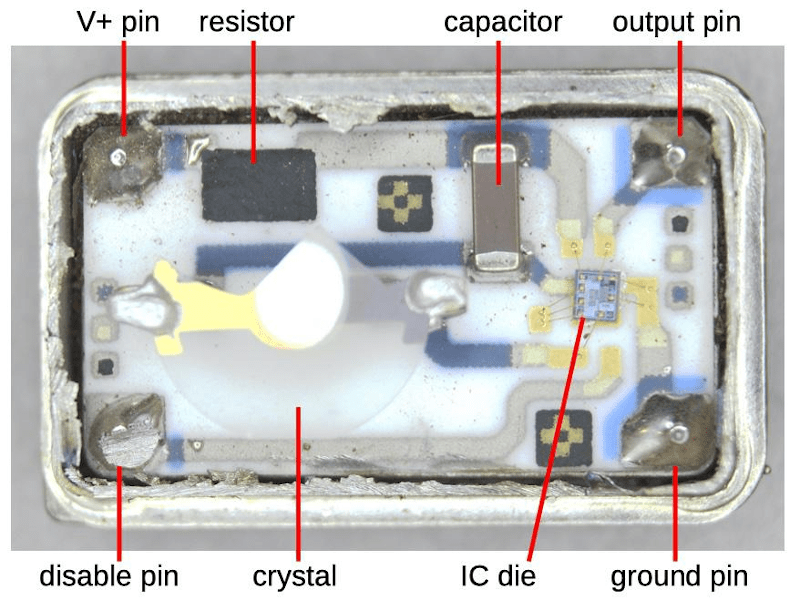We are always glad to see [Ken Shirriff] tear into something new and this month he’s looking inside a quartz oscillator module. Offhand, you’d think there’s not much to these. A slab of quartz and some sort of inverter, right? But as [Ken] mentions, “There’s more happening in the module than I expected…”
If you’ve ever wanted to decap devices, big hybrid modules like these are a good way to get started since you don’t need exotic chemicals to get at the insides. [Ken] managed to break the fragile crystal wafer on the way in. Inside was also a small CMOS IC die. Time to get out the microscope.
If you follow [Ken’s] blog, you know he’s no stranger to analyzing IC dice. The oscillator IC is a pretty standard Colpitts oscillator but it also provides a programmable divider and output drive.
The circuit uses some unusually configured capacitors. [Ken] takes the time to point out CMOS logic structures throughout. If you haven’t seen one of [Ken’s] deep dives before, before, it’s a great introduction.
You can learn more about crystal oscillator theory. We used some test equipment to characterize a crystal a few years ago.















++ for Ken, always a pleasure to read.
Indeed, very well done, youtube not required or desired.
Yeah, video, or even just audio can sometimes be clearer than text and pictures. But something like this with such good annotated images its so clear and understandable, with none of that back tracking to try and figure out which bit they were talking about. I wish more good interesting projects got decent documentation of this type.
I’ve been using these for so long that I don’t thing I have ever read a data sheet. I didn’t know that the fouth pin was a disable. I thought it was NC.
Maybe it’s a recent addition. Either that or they never told us. It wax always “nc” for me, but who checks once they know the four pins?
Can’t be recent, I’ve had a couple oscillators from late 1990s and that pin was marked output disable. Maybe it varies with brand and specific model?
It was NC. They just had the option to add disable or select to that pin.
There is no bonding wire from the disable pin trace to the die, so it is NC here as well
Depending on the model, the fourth pin can be NC, Enable, or frequency fine tune.
“no stranger to analyzing IC dice.”
https://en.m.wiktionary.org/wiki/dies#English
Scratch that, didn’t get far enough
(electronics) (plural also dice) An oblong chip fractured from a semiconductor wafer engineered to perform as an independent device
I must wholeheartedly congratulate Ken on his write up. It is so refreshing (and rare) to see some good documentation with appropriate pictures, diagrams and words, and NOT have to sit through some god-awful shaky, badly lit, out of focus youtube video, that like Foldi-One says, you have to go back and forward to catch that tiny tidbit that (sometimes) makes wasting that 10 minutes of your life even worth it.
THANKYOU!
Thank you [Ken Shirriff] for this beautiful teardown, crisp pictures, and detailed explanations. +1 on the “no video” comments – video sucks for material like this.